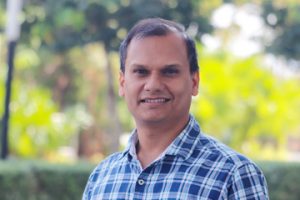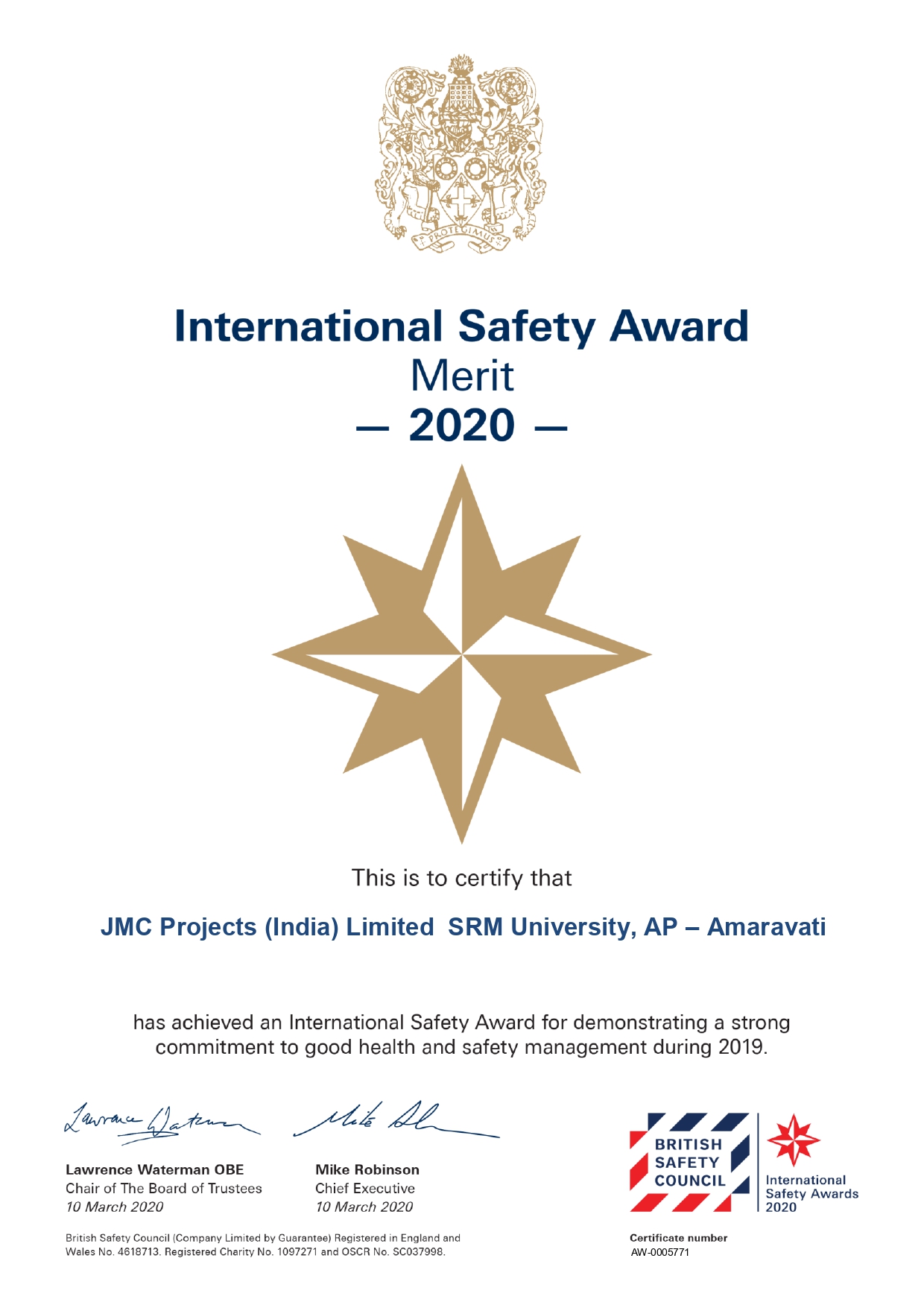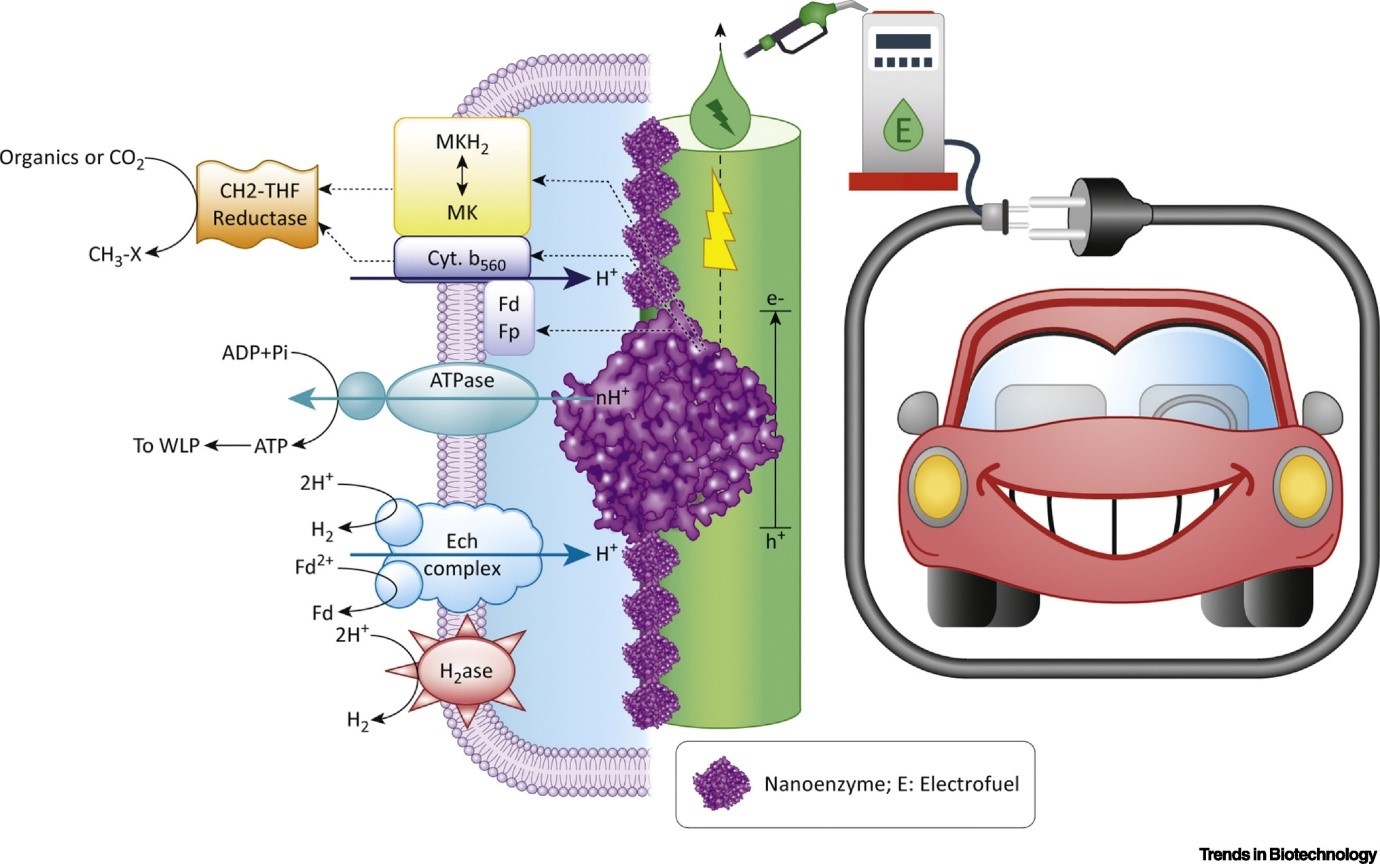Small-World Wireless Sensor Network to Help Making Smart Applications for Industries
 Dr Om Jee Pandey, Assistant Professor, Department of Electronics and Communication Engineering, has recently published two papers in renowned IEEE journals. His paper “Secrecy Performance Analysis of Two-way Relay Non-Orthogonal Multiple Access Systems” was published in IEEE Access Journal, having an impact factor: 4.06. Whereas, “Fault-Resilient Distributed Detection and Estimation over an SW-WSN Using LCMV Beamforming” was published in IEEE Transactions in Network and Service Management (Impact factor: 4.682). The study was done in associations with Prof. Rajesh M Hegde, Department of Electrical Engineering, IIT Kanpur and Prof. Ha H. Nguyen, Department of Electrical and Computer Engineering, University of Saskatchewan, Saskatoon, Canada. His research was focused on developing efficient Wireless Sensor Network services in small-world models. The proposed research can be applied in developing many state-of-the-art applications in the areas related to healthcare systems, climate-smart agriculture, intelligent transportation, home automation, manufacturing, smart utilities, and industries etc.
Dr Om Jee Pandey, Assistant Professor, Department of Electronics and Communication Engineering, has recently published two papers in renowned IEEE journals. His paper “Secrecy Performance Analysis of Two-way Relay Non-Orthogonal Multiple Access Systems” was published in IEEE Access Journal, having an impact factor: 4.06. Whereas, “Fault-Resilient Distributed Detection and Estimation over an SW-WSN Using LCMV Beamforming” was published in IEEE Transactions in Network and Service Management (Impact factor: 4.682). The study was done in associations with Prof. Rajesh M Hegde, Department of Electrical Engineering, IIT Kanpur and Prof. Ha H. Nguyen, Department of Electrical and Computer Engineering, University of Saskatchewan, Saskatoon, Canada. His research was focused on developing efficient Wireless Sensor Network services in small-world models. The proposed research can be applied in developing many state-of-the-art applications in the areas related to healthcare systems, climate-smart agriculture, intelligent transportation, home automation, manufacturing, smart utilities, and industries etc.
In order to develop efficient Wireless Sensor Network (WSN) services, several methods have been proposed for node localization, clustering of sensor nodes, new routing algorithms, adaptive duty cycles, usage of mixed-transmission models, placement of intelligent gateways, usage of mobile elements, and bypassing holes. However, the introduction of small-world characteristics in a WSN has hitherto not been used in this context. A small-world network is typically characterized by a low average path length and high average clustering coefficient and has been widely used to model social networks. However, small world models have not been used in the development of WSN. The primary objective of this research is to develop small world models for WSN services such as sensor node localization, data gathering, data fusion, network lifetime maximization, energy-balancing, reduced data transmission delay, time synchronization, energy-harvesting, and robust distributed detection and estimation. A small world WSN reduces the number of hops required for data transmission, and maximal utilization of sensor nodes closer to the sink. Other advantages of small world WSN include efficient bandwidth utilization, increased network lifetime, and fast convergence of event detection and parameter estimation. Small world WSN developed in tandem with novel routing strategies leads to improved WSN services for various applications.
In WSNs, sensor devices transfer the data cooperatively using multiple hops over a network. Multiple hops required for data transmission over a WSN leads to reduced network performance in the context of device localization, energy efficiency, energy balancing, data latency, speed of event detection and parameter estimation, and network robustness. This is because of poor distance estimation between sensor device pairs, maximum utilization of sensor devices closer to the sink, and a short radio range of sensor devices. Hence, the primary focus of this research work is to reduce the number of hops required for data transmission. In this context, Small World Characteristics (SWC) can be introduced in a WSN, leading to a small world WSN (SW-WSN). An SW-WSN is a well-connected network with reduced hop counts between node pairs.
Small world phenomena were first observed by Stanely Milgram in social connectivity of people. Later, it came out as a theory of “six degrees of separation”. Six degrees of separation claims that all people are six, or fewer, social connections away from each other. This theory is also known as the 6 Handshakes rule. Further, small-world phenomena have been investigated in graphs. Subsequently, SWC is observed in wireless networks. In general, small world WSNs (SW-WSNs) are characterized by low Average Path Length (APL) and high Average Clustering Coefficient (ACC). For an undirected WSN with N nodes, representing a regular network, the APL increases linearly with the number of nodes present in the network. On the other hand, in a WSN having SWC the APL, between two randomly selected nodes grows proportionally to the logarithm of the number of nodes in the network. “WSNs are spatial graphs, where links are created using radio connectivity. There is a limit on the radio range of a sensor node, hence in such networks, the long-range connections are generally absent. Thus, these networks are clustered, but they do not experience small-world phenomena. Hence, the primary focus of this work is to develop SW-WSN using various methods leading to efficient WSN services” explained Dr Pandey.
Dr Pandey is now busy to take the studies further. His future projects include-
• Small World WSN (or SW-WSN) Development for Smart Healthcare.
• Cognitive SW-WSN for Energy-Efficient CPS and IoT applications.
• Climate Smart Agriculture using Cognitive SW Characteristics.
• Low-Latency and Intelligent Transportation over small world CPS.
• Multi Sensor Fusion over SW-WSN for CPS/IoT Applications.
• Information and Context Quality in WSN, IoT and CPS Networks.
- Published in ECE NEWS, News, Research News
Fostering a safe and healthy workplace at construction site
British Safety Council applauds JMC Projects (India) Limited – SRM University AP

The green campus of SRM AP, Andhra Pradesh is in the process of expanding to ensure a place that continuously inspires and nurtures the students. The buildings foster a new culture of learning that is multi-dimensional, global, social, experiential, and interactive. Designed by Perkins + Will, the American architecture firm which specializes in educational institutions and has been involved in developing some of the marquee structures in this category, JMC Projects (India) Limited took up the monumental task of constructing the buildings of SRM AP.
British Safety Council has awarded the International Safety Award with Merit 2020 to JMC Projects (India) Limited SRM University AP, Andhra Pradesh for its commitment to keeping the workers and workplaces healthy and safe during the 2019 calendar year. The prestigious award recognizes and celebrates the organizations from around the world which have shown a true dedication to prioritizing the safety of the workers and workplaces and have made outstanding advances to achieve it. It requires organizations to invest in workers’ health, safety, and wellbeing. The business leaders, managers, and staff play a crucial role in making health and safety a reality and inspiring their colleagues to do the same.
The joint venture of JMC Projects (India) Limited and SRM AP have pledged to continue maintaining the international standard in the future.
- Published in News
Scaling up waste remediation through nanoenzymes
Dr. Lakhveer Singh on clean and affordable bioelectrofuels
“Nanoenzyme as a cutting-edge innovation that makes bioelectrofuels more affordable and efficient for sustainable future”
Dr. Lakhveer Singh, Assistant Professor, Department of Environmental Science, publishes a paper on “Bioelectrofuel Synthesis by Nanoenzymes: Novel Alternatives to Conventional Enzyme” in the journal “Trends in Biotechnology” with an Impact factor of 13.74. The paper discusses the vital role of nanozymes to advance Bioelectrochemical cells platforms for improved bioelectrofuels generation and waste remediation. Nanozymes are nanomaterials with intrinsic enzyme-like characteristics that have gained importance over the past decade because of its capability to address the limitations of natural enzymes – low stability, high cost, and difficult storage.
Waste recycle and reuse is the need of the hour, and are the most prioritized research in the 21st century. Innovation with present-day technologies as “Bioelectrochemical cells” with a focus on waste remediation, recovery and reuse is believed to strengthen the resource security along with building a sustainable and resilient society. “In order to mitigate several challenges pertaining to the ineffectual performance of microbial catalysts in electrode frameworks, nanomaterial-based nanozymes exhibit capabilities to boost their efficiency by enhancing microbial connection and interaction with electrode surface.”, explains Dr. Lakhveer.
 Mechanisms of Nanoenzyme–Microbe Interaction That Facilitate Bioelectrofuel Production
Mechanisms of Nanoenzyme–Microbe Interaction That Facilitate Bioelectrofuel Production
THe further says, “The application of nanoenzymes to replace natural enzymes for improved bioelectrofuel production has long been under-rated. Recent advancements in bioinspired mimetics have led to applying nanoenzymes as a favourable bifunctional or multifunctional tool to achieve large turnover frequencies and high stability in bioelectrochemical platforms. Despite a few technical impediments, nanoenzymes guarantees clean and affordable bioelectrofuels”.
For long-term operations, biocompatibility is observed to remain a challenge associated with nanoenzymes. This is because of the concurrent shape change of nanoparticles during its gradual decomposition that often alters their electrocatalytic behaviour in response to prolonged operation, thus adversely affecting the electrofuel productivity. This paves the path for the future research work of Dr. Lakhveer which will focus on the preparation of nanoenzymes based electrocatalysts with doping of plasmonic or paramagnetic noble metals. This will counter the issue of mass loading and slow down the gradual decomposition process to ensure uninterrupted bioelectrofuels supply during long-term operation.
- Published in News, Research News
Next-Tech Lab Scaling New Heights: Won Three Hackathons in a Row
The unstoppable team of Next-Tech Lab of SRM University- AP, has again brought laurels to the University by winning three hackathons in a row. During this lockdown while some devoted their time to newfound hobbies, our young researchers successfully developed a fresh multiplayer virtual reality game – ‘Whack A Mole’ and a cloud-based multiplayer FPS in Virtual Reality- ‘Desert Shooter’. The three-member team has successfully bagged the second prize in the International / Professional Award at SKYHacks2020; Best echoAR Hack at Silicon Valley Hacks; and Best AR/VR hack at HackNow, organized by Cal Hacks, a non-profit organization at the University of Berkeley, California.

Karthik, Koushik & Khushboo (Clockwise)
When asked how the idea of making such a game crossed their minds, Epperla Karthik, a 2nd Year student of Computer science and Engineering and a member of the team, said, “My family loves attending Tradeshows, every time we attend one my dad and I challenge each other to win a game of Whack A Mole. But, due to strict quarantine that my family is following, it’s been a while now for such challenges. My teammates and I, being gaming and virtual reality enthusiasts, decided to develop a VR version of ‘Whack A Mole.’”
‘Whack A Mole’ is a multiplayer virtual reality game that allows users to play against the computer or their families or both! One can use it on iOS or Android. It is built on Unity3D, on top of Photon PUN and GoogleVR SDK. It is also integrated with Google Firebase. “This was the very first time we were working on the development of virtual reality games and networking. As we had to run the game on our phone to record the gameplay, the output video on YouTube is a bit blurry,” explained Khushboo Sharma, another member of the team and a 2nd-year student of Computer Science and Engineering. “We completed the development of the game in only 20hrs, starting from scratch. We developed a few of our own UI elements and game assets. I feel the User-Interface of the app and the effects are pretty cool. VR development is real FUN! Moreover, there are a lot of API and SDK that unity supports,” exclaimed Koushik Bhargav, a 3rd-Year student of Computer Science and Engineering and the third member of the team.
‘Desert Shooter’ is another multiplayer virtual reality game developed by the team that allows users to play against the computer or their families or both. You can connect with your friends and play together. The game consists of a swarm of robot ships moving towards you and you have to protect yourself from them. “The interesting part is that all of this happens in Mixed Reality which makes the game immersive. We built it on Unity3D, on top of Photon PUN and GoogleVR SDK, Echoar. It is also integrated with Google Firebase and the assets are stored in echoar cloud. This project won the best AR/VR hack at “Hack: Now” which is organized by the University of California Berkeley,” said Epperla Karthik.
The team has plans to make this game to be a cross-platform game. Therefore, their next plan of action is to make the web version of it. The team is also planning to release it to production so that users can have an immersive experience of modern gaming techniques.
It is again proved that pure talent can never be put in quarantine. It will always find a way to express itself to the world. Our young developers have brilliantly used the ample time and opportunity to put their brains in best use and to bring recognitions from nationally and globally acclaimed competitions.
- Published in CSE NEWS, News, Students Achievements


